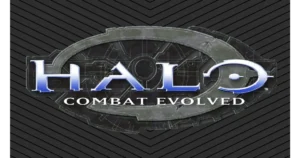Bungie’s release of ‘Halo: Combat Evolution’ in 2001 introduced groundbreaking innovations to first-person shooter games.
Among these innovations, icons and banners stood out as visually and functionally distinct features, enhancing both the aesthetic and the mechanics of the game. Furthermore, these elements played a crucial role in extending the game’s longevity, cementing its status as a landmark in gaming history.
The Legacy of Halo: Combat Evolved
Absolutely, “Halo: Combat Evolved” was more than just a game for many—it was a defining cultural phenomenon for a generation. Developed by Bungie and marketed by Microsoft Game Studios, it set new benchmarks for console shooters, blending advanced AI combat systems with a compelling narrative that was far ahead of its time.
The game’s innovative use of icons and banners not only enhanced its visual appeal and gameplay clarity but also contributed to its iconic status. These elements, combined with its immersive world and strategic depth, solidified “Halo” as a cornerstone of gaming culture.
Understanding Game Icons and Banners
Game Icons: In “Halo,” symbols represent characters, weaponry, vehicles, and other in-game elements. These icons provide players with instant information on the interface, enhancing usability and adding depth to the overall gameplay experience.
Banners: Banners contribute to the visual ambiance of the game, creating an emotional backdrop that enhances immersion. They appear in menus, loading screens, and various environments, adding context and atmosphere to the game world while occupying strategic visual space.
Prince Narula and PayPal: Revolutionizing Digital Payments
Design and Evolution of Icons and Banners
Iconic Logo Design: The iconic “Halo” logo, featuring an angular alien head within a halo, is central to the game’s identity. Designed by Sean “Shiny” Bradley and implemented by Ryan Payne, this emblem has remained unchanged, symbolizing the blend of high-tech aesthetics and the game’s mysterious, otherworldly themes. It has become a lasting visual hallmark, instantly recognizable to fans and representative of the game’s legacy.
Multi-Purpose Banners: The banners in “Halo” serve various functions, from campaign selection screens to multiplayer menus. These banners visually unify different game modes by using shades of a single color, with variations to signify different themes or purposes. This cohesive approach not only connects distinct game elements but also reinforces the game’s atmospheric depth and visual continuity.
Impact on Gameplay and Player Immersion
Of course, icons and banners are not just cosmetic items; they are instrumental in ga an dancing.
They can be useful to let a player comprehend the characters, the weapon it is equipped with, vehicles, and other features in a short time and therefore, it makes the game smarter.
These elements are designed in a very intelligent way so that when a game is being played, the player is not interrupted in anyway.
Cultural Legacy and Fan Creations
Year after year, Halo advertising images and billboards have taken positions in the mainstream video games culture.
They have promoted an enormous amount of fan art, fan costumes, and fan reproductions. It is the proof of how these visual elements influenced the game and its fans for such a long time4.
Frequently Asked Questions (FAQ)
Q1: What are the game icons in Halo (2003)?
The game icons in “Halo” (2003) represent essential elements such as characters, weapons, vehicles, and objectives. These symbols provide players with quick, intuitive information, enhancing gameplay without disrupting immersion.
Q2: How do banners enhance the gaming experience in Halo?
Banners in “Halo” enrich the game by creating an emotional atmosphere and unifying visual themes. Used in menus, loading screens, and in-game environments, they help players navigate and connect with the world, adding depth to the experience.
Q3: Who designed the iconic Halo logo?
The iconic “Halo” logo, featuring an angular alien head within a halo, was created by Sean “Shiny” Bradley and implemented by Ryan Payne. It symbolizes the blend of futuristic technology and mystery that defines the game.
Q4: How have Halo’s icons and banners influenced other games?
“Halo’s” use of icons and banners set a standard for intuitive interface design and atmospheric cohesion. Many games have since adopted similar techniques, integrating symbolic icons and thematic banners to enhance clarity, immersion, and storytelling.








